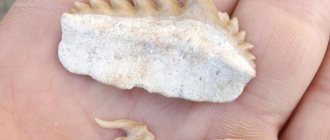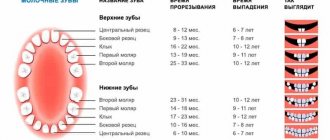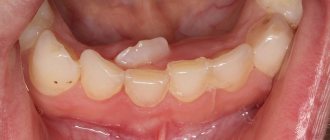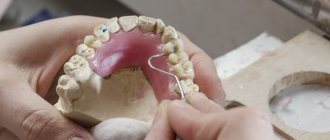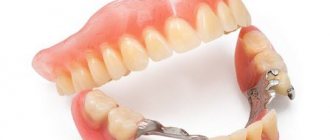Fear and curiosity – these are the feelings the creators of the blockbuster “Jaws” hoped to evoke in viewers, but the effect exceeded all expectations. And we're not talking about Oscars and record box office receipts. The great white shark, presented in the film as a monster greedy for human flesh, began to be caught and exterminated without hesitation.
However, ichthyologists will say that in most cases, attacks by white sharks on humans are the result of incorrect identification of a swimming object. When viewed from the depths, a diver or surfer can easily pass for a pinniped or a turtle, and in general, great white sharks, due to their curiosity, try everything by the skin of their teeth.
Today, about 3.5 thousand individuals of this ancient predator live in the world's oceans, which is undoubtedly dangerous and therefore not well studied. But like any animal with a sinister reputation, the great white shark will always be of interest, especially to thrill-seekers.
Origin of the white shark
Previously, it was believed that white sharks descended from megalodon - a giant fish, up to 30 m long and weighing almost 50 tons, which became extinct 3 million years ago. But modern studies of the remains of the superpredator have made it possible to establish that megalodons belong to the family Otodontidae, and white sharks belong to the family of herring sharks, so the number of supporters of this version has greatly decreased.
Today, scientists consider Isurus hastalis, one of the extinct species of mako shark, to be the recognized ancestor of the white shark. Both predators have almost the same tooth structure, only in the white shark, during evolution, serrations have formed along the edges of the teeth.
Human use of the tool
Gilbertese weapon with sharp shark teeth.
In Oceania and the Americas, shark teeth were commonly used to make tools, especially for weapons such as clubs and daggers, but also as woodcarving blades and cooking tools. For example, various shark-tooth weapons were used by the Native Hawaiians (see example here[21]), who called them leiomano.[22] Some types were reserved for royalty.[23] Guaitaka (Weittaka) from coastal Brazil has arrowheads with shark teeth.[24] Remains of sharp shark weapons, as well as replicas of shark teeth, were found in the Cahokia Mounds of the upper Mississippi River valley, more than 1,000 km (620 mi) from the ocean.[25] It is reported that the Easter Island rongorongo tablets were first shaped and then outlined using chopped shark tooth.[26]
Taxonomy of the white shark
The white shark belongs to the class of cartilaginous fish (Chondrichthyes), which means that its skeleton does not have bones, but consists entirely of cartilaginous tissue. In addition to sharks, stingrays and chimeras have this feature.
The white shark is part of the order Lamniformes, which unites large species of sharks with a torpedo-shaped body.
The dense build, pointed snout and 5 gill slits made it possible to classify the white shark as a member of the family of herring or lamn sharks (Lamnidae). Its closest relatives are the mako shark, salmon shark and lamna.
The genus of white sharks (Carcharodon) includes 2 extinct and one modern species - the great white shark (Carcharodon carcharias), also called carcharodon or, due to its sad fame, the man-eating shark.
Internal organs
The shark's liver is large and accounts for 25% of the total body weight. It contains a large amount of fat and gives energy to the fish. This is a hydrostatic organ, it helps maintain buoyancy by containing a large amount of fat and thereby reducing body density.
The stomach is connected to the duodenum which ends in a spiral valve. The spiral valve increases the surface area through which nutrients from food are absorbed. It is connected to the rectum and anus.
Pancreas - transmits secretions through the vental lobe to the duodenum.
Appearance of a great white shark
This is a stocky fish with a dense body, elongated in the shape of a torpedo. The head of the predator is very large, conical, with a pointed muzzle and mouth, curved into a parabola. On the sides of the head, closer to the pectoral fin, there are 5 huge gill slits that provide water respiration.
The pectoral fins are large, elongated in the shape of a sickle. The first dorsal fin is high, triangular in shape, growing slightly further than the base of the pectoral fins. Sometimes its top is rounded. The second dorsal fin is very small, as is the anal fin. On the pelvic fin of males there is an elongated element - a copulatory outgrowth.
The tail fin blades of the white shark are of the same width, which is typical of other herring sharks, which are capable of developing decent speed before attacking.
The name “white” shark does not quite accurately convey the coloration of the predator. Its upper part and sides are often gray, sometimes brownish or with a blue tint. There are dark, almost black specimens. But the belly of a white shark is dirty white.
Newborn sharks and adult individuals are completely identical in appearance, but differ only in size.
Concomitant pathologies
In humans, two types of teeth are generated - milk and permanent. There are 20 of the first ones, they appear in the second year of life, and by the age of 13-14 they all fall out. The latter begin to grow from the age of 6, and by the age of 3-14 they completely replace the “milk jugs”.
The change of bone elements is accompanied by resorption (absorption) of the roots of the “milk jugs” and their subsequent loss. Osteoclasts are directly involved in this - macrophage cells that destroy bone tissue. Resorption begins from the tips of the roots of the “milk jugs”, into which the crowns of the growing permanent units rest.
If the prolapse of the “milk jug” is delayed for any reason, the permanent element growing underneath it is forced to shift from its position and grow in the second row of the jaw arch, thus turning into a “shark”.
Supernumerary units are those that have grown beyond the required 32 units. The dimensions of a normal human jaw are designed to accommodate 32 units. Sometimes there are fewer of them, since not everyone grows third molars (“eights”). If there are more teeth than expected, they grow crowded or out of row.
Underdevelopment of the jaws also leads to a lack of space, only not for superfluous, but for “legitimate” complete elements. The development and proper growth of the jaws is influenced by many factors - the way the child is fed, breathing habits (nasal or oral), and some others.
In the presence of unfavorable conditions, the adequate formation of the jaws is disrupted, as a result of which they become narrowed and/or shortened with a cross, distal or mesial bite. On the reduced jaw there is not enough space for the entire set, so a second row appears - the shark one.
How much does a white shark weigh?
The maximum possible size and weight of Carcharodon still causes heated debate in scientific circles. In the authoritative encyclopedia of past years, “Animal Life,” 1971, the greatest height of a measured white shark is called 11 m, without indicating weight. However, the opinion of modern scientists on this matter is less optimistic. Ichthyologists believe that, given an ideal habitat, a white shark can grow to a maximum of 6.8 m in length.
A number of scientific sources claim that the largest white shark was caught off the coast of Cuba in 1945. Its length was 6.4 m and its estimated weight was 3,324 kg. The measurements were based on a photo of a white shark, so some experts believe that the real size of the fish is overestimated by at least 1 meter.
In 1988, a white shark was caught off the Canadian coast, which was measured and weighed. It was a female, 6.1 m long with a body weight of about 1,900 kg. This specimen is considered so far the only one whose dimensions and weight have been reliably confirmed.
Interesting fact: if you compare the weight of a great white shark with large representatives of other families, then its mass with the same length will be almost 2 times greater!
On average, adult individuals weigh from 680 to 1,100 kg. Females are heavier and larger than males, their length is 4.6-4.9 m, males grow from 3.4 to 4 m.
Nevertheless, what excites minds is not so much the impressive dimensions of the great white shark, but its deadly mouth. After all, larger predators live in the depths of the sea, for example, representatives of the family of giant sharks, and the teeth of the white shark are unique in their own way.
History of discovery
Scapanorhynchus Tehan
, Menuha Formation (Upper Cretaceous), southern Palestine. ODODUS SHARK TOOTH
The oldest known records of fossilized shark teeth are by Pliny the Elder, who believed that these triangular objects fell from the sky during lunar eclipses.[18]
According to Renaissance reports, large triangular teeth fossils were often found in rock formations, believed to have fossilized the tongues of dragons and snakes and were therefore called "tongue stones" or "glossopetras". Glossopetrae
usually considered a cure for various poisons and toxins;
they were used in the treatment of snake bites. Because of this ingrained belief, many nobles and royals wore these "tongue stones" as pendants or kept them in their pockets as good luck charms.[ citation needed
]
This interpretation was corrected in 1611 by an Italian naturalist. Fabio Colonna, who recognized them as the teeth of an ancient shark, and in 1667 the Danish naturalist Nikolaus Steno, who discussed their composition and are known to have created an image of a shark's head with such teeth.[19] He mentioned his discoveries in the book, Dissected Shark Head
, which also contained an illustration of
a C. megalodon
tooth, which was previously thought to be a tongue stone.[20]
How many teeth does a white shark have?
This predator has the largest teeth of all fish existing today, their length is about 5 cm. Triangular-shaped teeth with rough jagged edges are arranged in several rows and are constantly renewed. The number of rows depends on the age of the fish, there are from 3 to 7. The upper jaws bear larger teeth, on the lower jaw the teeth are smaller but sharper.
Each row can contain from 30 to 40 teeth, i.e. The total number of teeth in the mouth of a great white shark is more than 300.
The teeth of the first, working row quickly wear out and, to replace the lost ones, fully formed new teeth rise from the gums and move forward. This “conveyor” is ensured by mobility in the gums and short tooth roots.
Today, thrill-seekers don't have to watch thrillers about sharks. An extreme type of ecotourism is extremely popular - cage diving, when a person, protected only by metal bars, sees the deadly jaws of the famous predator at arm's length. Entertainment costs everyone 50-150 euros. Dangerous attractions await their customers in places with the largest concentrations of representatives of the species.
Recommendations
- "Shark Teeth"
- "Fossil Folklore".
- "Shark Rescuers:: Shark Teeth."
- ^ a b c
"What do sharks eat - shark diet."
Types of sharks
. - ^ a b c d f
Zen Cart® Team; and others. "On Fossil Shark Teeth." - "6 plus inch megalodon shark teeth."
- ^ a b
"Department of Ichthyology of the FLMNKh: fossil sharks." - ^ a b c
Hennemann, Ralph M. (2001).
Sharks and Rays: A Guide to the World's Elasmobranchs
. IKAN-Unterwasserarchiv. pp. 266–269. ISBN 978-3-925919-33-6. OCLC 223251653. - ^ a b c d
"Sink Your Teeth into It: 20 Facts About Shark Teeth."
Scientist chaise lounge
. - "Georgia Fossil - Shark Tooth."
- Case, Gerard (1967). "Fossil sharks and fish remains of North America". clause 2.
- Heemstra, P.C.; Hiemstra, E. (2004). Coastal fishes of southern Africa
. NISC/SAIAB. pp. ISBN 1-920033-01-7. - Naylor, Gavin J.P.; Marcus, Leslie Floyd (1994). "Identification of individual shark teeth from the genus Carcharhinus by species." American Novitates Museum
. HDL:2246/4942. ProQuest 51542224. - Ahonen, H.; Stowe, A. J. (29 July 2008). "Shark jaws and teeth: an unexplored resource for population genetic research." Journal of Fish Biology
.
73
(2):450–455. Doi:10.1111/j.1095-8649.2008.01896.x. - Chen, Chunlin; Wang, Zhongchang; Saito, Mitsuhiro; Tohei, Tetsuya; Takano, Yoshiro; Ikuhara, Yuichi (February 3, 2014). "Fluorine in Shark Teeth: Its Direct Atomic Resolution Imaging and Enhancement Function." Angewandte Chemie
.
126
(6):1569–1573. Doi:10.1002/ange.201307689. - Becker, Martin A.; Seidemann, David E.; Chamberlain, John A.; Buhl, Dieter; Slattery, William (July 2008). "Strontium isotope signatures in emeloid and dentin of Upper Cretaceous shark teeth from western Alabama: paleoenvironmental and geochronological implications." Paleogeography, paleoclimatology, paleoecology
.
264
(1–2):188–194. doi:10.1016/j.palaeo.2008.04.006. - Uitenak, Lisa (November 7, 2008). "Biomechanics and evolution of shark teeth". Master's theses and dissertations
. ProQuest 304460308. - “Sharks are losing their teeth! “Bum on Dharma Beach.” Dharma Beach Boom
. Archived from the original on 2014-11-13. - Haven, Kendall (1997). The 100 Greatest Scientific Discoveries of All Time
. Libraries without limits. pp.–26. ISBN 1-59158-265-2. - Bruner, John (1997). "Megatus Shark." FLMNH. Archived from the original on 2007-12-28. Retrieved 2008-01-16.
- "Treasures of Hawaii: Shark Tooth Weapons." bishopmuseum.org. Archived from the original on 2008-12-04. Retrieved 2008-11-27.
- Taylor, Leighton R. (1993). Sharks of Hawaii: Their Biology and Cultural Significance
. University of Hawaii Press. paragraph 28. ISBN 978-0-8248-1562-2. - Anthony Meyer (1995) Ocean Art,
vol. 2, p. 579. - Metro, Alfred (1946) Handbook of South American Indians,
vol. 1, p. 522, "Guaitaca" - Greg Perino, c. 1950, Cahokia Comes Alive,
pp. 66-67 - Metro, Alfred (1940), "The Ethnology of Easter Island". Bulletin of the Bernice P. Bishop Museum
(Honolulu: Bernice P. Bishop Museum Press) 160: 404
Where are white sharks found?
Despite the obvious trend towards reduction in the species, white sharks continue to inhabit all oceans except the Arctic. The most numerous populations are found off the coast of South Africa, the American state of California, the Mexican state of Baja California, Australia and New Zealand. This is where the best photos of the white shark come from, chillingly realistic with their realism.
Most carcharodon prefer coastal waters of the temperate zone with temperatures from 12 to 24 ° C and stay almost below the surface of the water. However, large specimens thrive in tropical waters, cold seas, the open ocean, and also at considerable depth. According to documented data, a great white shark was once caught at a depth of 1,280 m using industrial bottom tools.
Before the invention of radio beacons, it was believed that long journeys were characteristic only of male white sharks, while females stuck to their native shores all their lives. However, the ability to track the movements of fish using modern equipment has proven the fact of long migrations by individuals of both sexes.
For what purpose great white sharks travel enormous distances remains a mystery. For example, it took one individual 9 months to travel 20 thousand km from the coast of South Africa to Australia and back. Perhaps long migrations are associated with reproduction or seasonal fluctuations in the food supply in different parts of the range.
Fangs of other predators
It's not just shark teeth that carry power. Here are more examples:
- Bear. This is the owner of the forest, a symbol of Russia. They used not only teeth, but even a whole paw. They used it to lock gates and barns. Breaking such a lock meant no luck in the hunt. The attacker was predicted to die from the paws of a bear. It is also protection from evil forces and slander. I took it with me during the day and put it under my head at night. This protected him from any misfortune. In folk medicine, bear teeth were used to treat toothache and back pain. Now it is an amulet for strength and invincibility, for protection from all kinds of misfortunes.
- Wolf. - a symbol of courage and self-confidence. With such a talisman, a person will go towards his goal, without turning back or stopping, without allowing even a shadow of doubt about his strength and luck. This is a symbol of freedom and independence, strength, dexterity. An indispensable amulet for those who risk their lives in the line of duty.
- . This beast symbolizes passion and sensuality. It is primarily used to enhance these properties. The owner of the amulet gains power over his mind and body. It will be useful for those who are prone to impulsive actions, who do not know how to use their capabilities and win the respect of others. In difficult situations, at turning points in life, the tiger's fang will point in the right direction.
- Crocodile. He is distinguished by strength, swiftness, fearlessness and ruthlessness. This predator symbolizes night and secrecy. The amulet is designed to endow the wearer with strength and endurance, fearlessness and composure.
Before purchasing an amulet, think carefully about whether such qualities are really needed. It may be better to use less aggressive items with magical meaning. For example, the teeth of a bear, wolf, tiger, and crocodile also have power. But the bear and the wolf are not so merciless, bloodthirsty and aggressive.
Nowadays on the Internet you can find any information or video in a minute, but before I learned all the interesting facts from educational programs on TV. I remember there was a channel where they told a lot of interesting things about the animal world for days on end. I really remember the creepy footage of sharks
, their
huge jaws with hundreds of teeth
. When we went to the sea with my parents as a child, I was even a little afraid to go into the water, it seemed to me that a shark’s fin was about to appear. Are sharks really as dangerous as we used to think?
What do white sharks eat?
Their diet is extremely varied, but despite their reputation for eating everything, white sharks feed primarily on fish, crabs, small marine animals, cephalopods and bivalves. Among the fish found in the stomachs of caught specimens are herring, sardines, stingrays and tuna. Dolphins, porpoises, sea beavers, sea lions and seals are often the prey of predators.
The undigested remains in the stomachs of white sharks once again confirm how aggressive these predators are towards other marine life. Their victims include beaked whales, sharp-snouted crocodiles, northern elephant seals, sunfish and various types of sharks: the dusky dogfish shark, the Australian nurse shark, the great blue shark, fox seals and katranas. However, such a menu is not typical for most white sharks and is rather the exception.
White sharks will not refuse carrion and happily eat the carcasses of dead cetaceans. Various inedible objects are often found in the stomachs of predators, for example, pieces of plastic, wood and whole glass bottles.
Sometimes great white sharks practice uncharacteristic cannibalism. For example, in the waters of Australia, before the eyes of observers, a 6-meter white shark bit its 3-meter relative in half.
If the hunt is successful, predators eat for future use. Thanks to its slow metabolism, a white shark weighing about a ton only needs 30 kg of whale blubber for 1.5 months. However, these are purely theoretical calculations, and in practice, predators eat much more, while demonstrating hunting skills honed over millions of years of evolution.
Muscles
A shark has two muscles:
- The red musculoskeletal muscle produces approximately 25-50% of a shark's strength and allows them to swim continuously. The red muscle fibers are concentrated in the shark's belly and are located near the spine, which strengthens its spine. Depends on temperature, at low temperatures it becomes useless.
- White musculoskeletal muscle - not so dependent on temperature. Important for tail movement, allows the shark to make fast and sudden movements.
Recommended reading: Can sharks smell blood in the water?
White shark hunting methods
Carcharodons live and hunt solitarily, but sometimes exhibit social behavior. For example, in the coastal waters of Cape Town, a group of 2-6 individuals is regularly spotted, which behave quite peacefully in the flock.
Observations carried out in South African waters have proven that there are various kinds of hierarchies within such groups. Females dominate over males, large individuals over smaller ones. When meeting, representatives of different groups and individuals quickly determine the social position of each other and the alpha leader. Conflicts are usually resolved with warning bites and in most cases end there. However, white sharks always separate before hunting.
Unlike their relatives, white sharks often stick their heads out of the water, catching odors wafting through the air. This usually happens when patrolling archipelagos, where pinnipeds set up rookeries.
When the animals are in the water, the white shark begins the hunt. It swims towards the victim just under the surface of the water and makes a sharp throw, sometimes jumping half or completely out of the water. Seals or fur seals are grabbed from below across the body, large individuals are dragged to the depths and drowned, then torn into pieces and eaten. Small ones are swallowed whole.
In fog and at dawn, the chances of a white shark attacking the first time are 50/50. If the attempt is unsuccessful, the predator pursues the prey, reaching speeds of up to 40 km/h.
Northern elephant seals, which are found in abundance off the coast of California, are bitten from behind by white sharks, immobilizing them. Then they wait patiently for the victim to bleed out and stop resisting.
Dolphins are never approached from the front, excluding the possibility of detecting danger using echolocation.
If you don't try, you won't know. According to this principle, great white sharks determine the edibility of any object, be it a buoy or a person. According to statistics, between 1990 and 2011 there were 139 white shark attacks on humans, of which only 29 were fatal.
Even after an attack, carcharodons do not intentionally pursue people; the victims are single swimmers who die from painful shock. When there is a partner, the wounded man can be saved by driving away the predator and leaving the danger zone together.
Only newly born sharks hunt on their own and do not pose a danger to humans or large animals.
Assault on a person
People are not of interest to sharks, although there have been many recorded cases of them attacking. The most common victims are divers and fishermen who get too close to the predator.
In the waters of the Mediterranean Sea, a “shark phenomenon” has been observed, according to which Carcharodons swam away after one bite. According to experts, sharks that are hungry can easily feed on humans.
Most often, when meeting sharks, people die from blood loss, drowning or painful shock. When attacking, predators injure their prey and wait for it to weaken.
Playing dead is the worst option when encountering a shark.
Solo divers can be partially eaten by a shark, but people who dive with partners can be saved. Often those people who actively resist are able to escape. Any blows can cause the predator to swim away. Experts advise, if possible, to hit the shark in the eyes, gills, and face.
It is important to constantly monitor the location of the predator; it may attack again. Sharks readily feed on carrion, so the sight of an unresisting victim will not stop them.
Reproduction of white sharks
Reproductive maturity of white sharks occurs late, when the fish reach their maximum size. Females mature at the age of 33 years, males are ready to breed at 26 years.
These predators do not survive in captivity, so research on their mating behavior and reproduction contains very little information.
Great white sharks are ovoviviparous fish. This means that fertilized eggs remain in the mother's oviducts. They hatch into embryos that feed on the eggs produced by the ovaries. A pregnant female carries on average 5-10 embryos, but theoretically a litter can contain from 2 to 14 cubs. During the early and intermediate stages, the hatchlings' bellies are very distended and filled with yolk, and when egg production stops, the fetus digests the nutrient reserves.
The exact timing of gestation in white sharks is unknown, but scientists believe that pregnancy lasts more than 12 months. The baby sharks are born fully developed, 1.2 to 1.5 m long, and ready to live independently.
Content
- 1 Types and functions 1.1 Dense flattened teeth
- 1.2 Needle teeth
- 1.3 Pointed lower teeth and triangular upper teeth
- 1.4 Non-functional teeth
- 1.5 Transitional teeth
- 1.6 Special mention: megalodon teeth.
- 1.7 Deposits
How long does a white shark live?
The average lifespan of a great white shark is estimated at 70 years. Studies based on the study of vertebral growth have made it possible to determine the age of the oldest white shark. It turned out to be a 73-year-old male. However, not everyone manages to live to an old age.
Previously, scientists believed that the predator at the head of the food chain had no natural enemies. But at the end of the last century, reports appeared of attacks on white sharks by killer whales, even larger and more bloodthirsty predators.
Another enemy of the white shark is the saltwater crocodile, which is capable of turning over a large fish and easily tearing its throat or belly.
Water pollution, accidental capture and poaching also reduce the already low numbers of the species. The price of a tooth on the black market is $600-800, and the cost of great white shark jaws reaches $20-50 thousand.
Today, predators are protected by law in many countries, for example, Australia, South Africa, the American states of Florida and California. By the way, Peter Benchley, the author of the famous novel “Jaws,” clearly did not expect the negative consequences of the sensational film adaptation. Therefore, the writer devoted the last 10 years of his life to studying the ocean ecosystem and actively advocated for great white sharks.
Interesting Facts
Sharks are a little-studied species of predatory fish. A decrease in their numbers affects the food chain, because they are part of the ecosystem of the world's oceans. Despite the fact that little is known about white sharks, researchers were able to identify a number of interesting facts related to these animals:
- Females have thicker skin than males. This is due to the fact that during mating the male roughly holds his partner, biting her fins.
- Shark teeth are coated with fluoride, which prevents them from deteriorating. Enamel consists of a substance that is resistant to acid produced by bacteria.
- Sharks have well-developed: vision, smell, hearing, touch, taste and sensitivity to electromagnetic fields.
- Sensitive olfactory receptors enable the shark to detect the smell of a seal colony located at a distance of 3 km.
- When hunting in cold waters, carcharodons are able to raise their body temperature.
Due to industrial fishing, the number of white sharks is rapidly declining. According to experts, there are about 3.5 thousand of them left all over the world. If sharks begin to die out, this could lead to the disappearance of many marine plants.
Evolution in action
It is unlikely that humans will ever evolve the ability to have more than two sets of teeth, since evolution requires that these differences influence whether offspring can survive. However, we're still evolving in this regard—experts say fewer people now have wisdom teeth. These are the third molars that appear in early adulthood, when our jaw is already fully formed. This is because we have been preparing food for ourselves for a long time, and it is softer, so there is no need for third molars. In addition, our jaw is becoming smaller and smaller, and, accordingly, there is no room left for molars. This is why we are seeing more and more people who are missing third molars. Only about 20% of the population does not have wisdom teeth.
Causes of the anomaly
The eruption of elements in the second row of the jaw arch, and this is what characterizes the anomaly called “shark teeth,” most often occurs during the period of change in bite (6-12 years). In adults, this defect is also possible, but the defect is diagnosed much less frequently than in children.
Second line units have a negative impact on the oral cavity and some important functions. Chewing food worsens, diction is impaired, malocclusion develops, and facial aesthetics suffer.
There are three main reasons for the anomaly:
- Supernumerary elements.
- Underdevelopment of the jaws.
- Untimely (delayed) loss of milk jugs.
But these factors, in turn, are a consequence of other, more profound disturbances in biogenesis, which are completely unknown.
It is believed that the formation of anomalous phenomena occurs as a result of:
- hereditary burden;
- acute and chronic infectious diseases, especially those that interfere with normal nasal breathing;
- Sucking on a pacifier for too long;
- general unsatisfactory condition of the child’s body, reduced immunity;
- lack of nutrients and lack of solid food in the diet, which creates the necessary load on the jaw apparatus and stimulates the development of the jaws.
Causes of congenital absence of incisors and ways to eliminate the defect.
Read here about what problems can be solved using the Kois deprogrammer.
At this address https://zubovv.ru/ortodontiya/prikus/analizatora-hip-ploskosti.html we will talk about the purpose of the hip plane analyzer.
